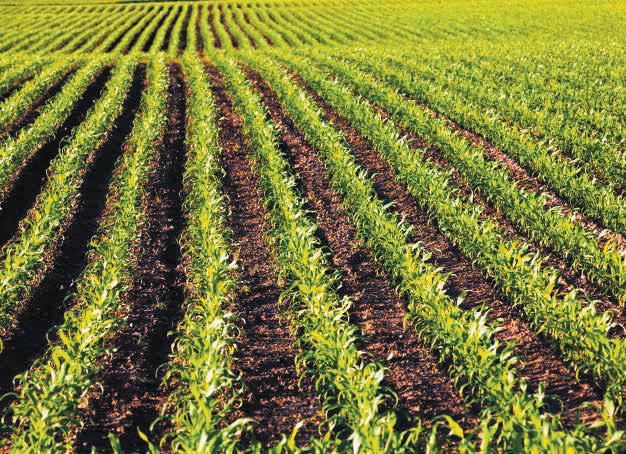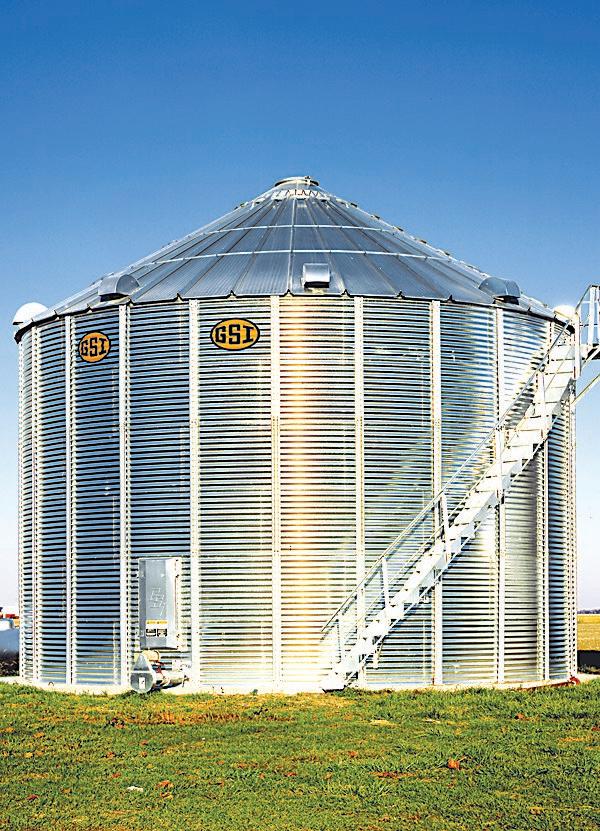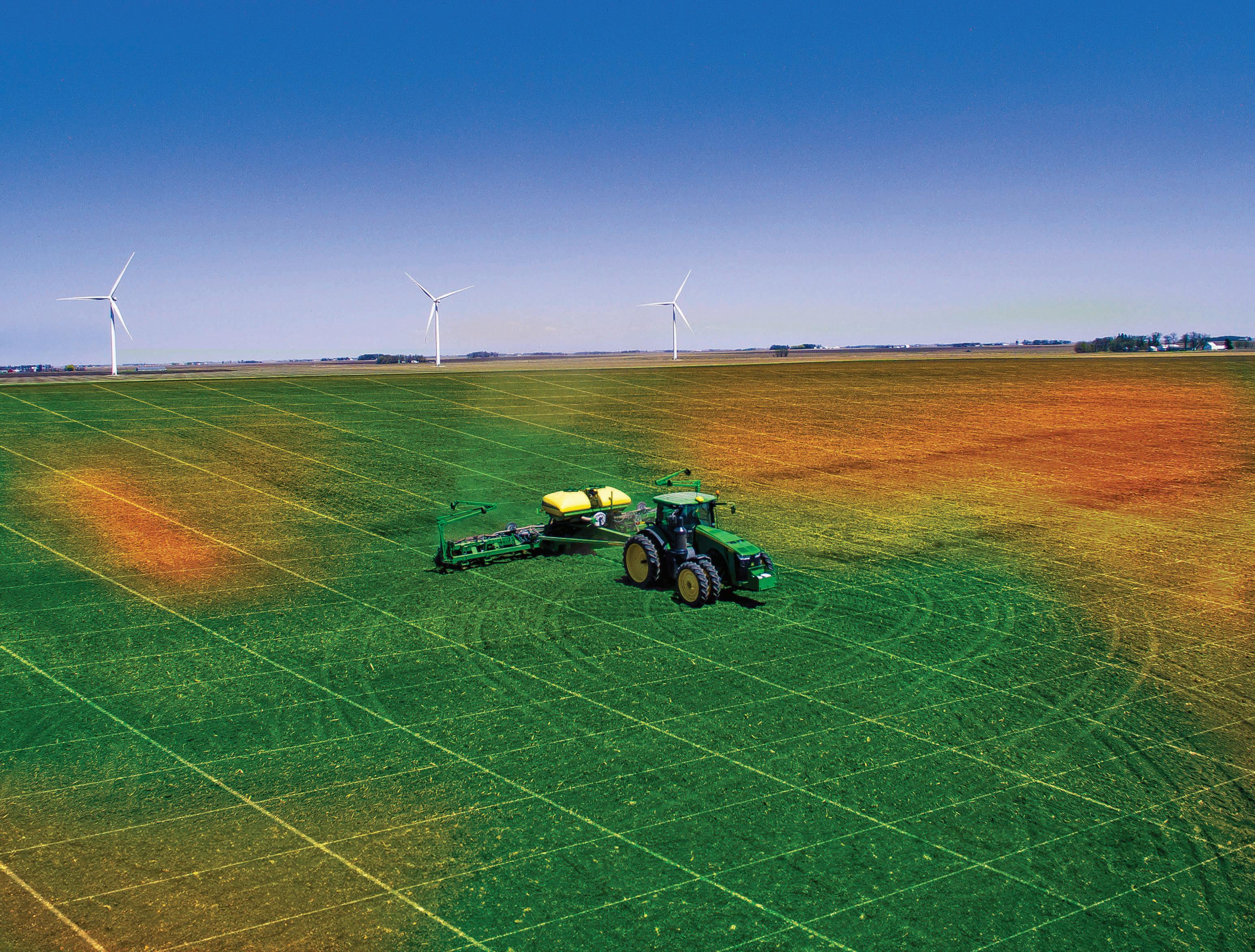

Friday, Aug. 22, 2025

Inside:
‘Meals on Wheels’
Hart: Record production creates market challenges
Managing STRESS at harvest time
Officials: Pests keeping their distance
’tis the season



Friday, Aug. 22, 2025

‘Meals on Wheels’
Hart: Record production creates market challenges
Managing STRESS at harvest time
Officials: Pests keeping their distance
’tis the season
...
By LORI BERGLUND Farm News writer
DOWS — It’s hard for Kathy Thelke to determine when she was busier: when she was a full-time teacher working off the farm every day, or now that she’s a full-time farm wife, helping with harvest.
“I tell people that I retired from one full-time job to work my other full-time job,” Thelke said.
There has seldom been a time in her life when she didn’t have her own share of jobs around the farm. Growing up on a farm near Palmer, she helped her mother garden and can the produce, walked beans every summer, and helped with cattle chores.
“I remember cultivating, and we had cattle, and my brother and I were in charge of making sure the cows always had water,” she recalled.
From her mother, she also learned about growing your own foods and filling a pantry for the season ahead.
“My mother always had a big garden,” she said. “She did a lot of canning and freezing.”
Thelke carried on the gardening and canning tradition with her own children.
“We always made a lot of tomato sauce, spaghetti sauce, chili sauce, and we would freeze the corn,” Thelke said.
See MEALS, Page 3C

These days, her own garden is a bit smaller, but she is discovering the benefits of having taught her children well.
“This spring, I sent out a message to the kids, ‘Are you guys planting a garden? You’re canning for me this year,” she said with a grin.
Her children, now all grown and married with several grandchildren, readily agreed. “We got you, Mom,” was the consensus.
“The kids all have big gardens and they said, ‘Mom, we’ll take care of it for you.’”
Now that’s any mother’s dream come true.
From teacher to farm wife
Those early lessons learned on the farm would carry her a long way. Thelke first moved to Webster City fresh out of Iowa State University with a degree in textiles and clothing to serve as the first apparel manager when Kmart opened a new store in Webster City in the summer of 1981.
A few years later she was promoted to a store in Iowa City, and it was at that time that she decided to go back to school and get a master’s degree in education, family and consumer science from the University of Iowa. Making a weekend visit to Webster City to see friends and attend what was then a major summer gathering, “Good Times,” with four days of country and western bands, she met her future husband, Gene Thelke.
The couple married in 1987 and settled down on the family farm near Dows. She stayed at home until their youngest entered kindergarten and then went to work at nearby Northeast Hamilton Schools. She served one year as a cook, three years as a substitute teacher, and then took over as Family and Consumer Science teacher. When Northeast Hamilton consolidated upper level grades with Webster City schools, she moved on to a similar position at South Hamilton before taking early retirement in 2020.
“I always loved teaching any of the food classes best,” she said. “Especially pastries, I always included pastries.”
family

That love of baking may explain why her family will only settle for homemade biscuits when she makes biscuits and gravy.
“I can’t get away with refrigerator biscuits or store-bought biscuits,” she said from her tidy kitchen. One can almost smell the gravy bubbling on the stove.
Foods are homemade here, even if she sometimes takes a little help with frozen foods and the air fryer. At harvest time, any extra help is appreciated.
While the couple’s three children are now grown, it’s at this time of year she starts cooking like the whole family is home again.
“About a month before harvest, I’ll start making big batches of spaghetti, or just whatever we are having, and freeze the extra portions,” she said. “Then all we have to do is warm them up.”
Homemade freezer meals are a bonus at harvest time, when making meals
Family effort at harvest
Since retiring from teaching, Thelke has taken on the job of driving the grain cart at harvest, while her husband runs the combine, and their son, Kent, drives the semi. They still pack a lunch, with cold meat sandwiches being a favorite.
“I always put in some chips, and try to make sure there’s an apple or a banana, maybe some pudding or yogurt — and a cookie,” she said.
At supper, they are all ready for a hot meal again, and the newest member of the family, Kent’s wife Madison, is quickly learning the ropes of being a farm wife. Harvest time for many farm families is also the season of ‘Meals on Wheels,’ as Thelke puts it with the creative mind of a veteran teacher.
“A lot of times supper is done now by Madison, Kent’s wife,” Thelke said. “She a lot of times will make a hot sandwich and bring it out, or send it with Kent in the semi.”
As for Thelke, learning to run the grain cart means she works closely with both husband and son.
“Gene tells me how far to be away; I count the rows, and he tells me the speed to go,” she said. “It works pretty well.”
from scratch can prove difficult.
“We used to call them leftovers. Now we call it meal prep, but it’s the same thing in my book,” she said with a warm smile.
But there’s something about a “leftover” that has been frozen fresh and reheated a month later that makes it so much better the second time around.
While working full-time off the farm, Thelke would make a hot breakfast, usually eggs, for the family before they headed off to work at harvest time. Her husband, Gene, always preferred to pack a lunch to take to the field, and she would have a hot supper waiting at home in the evening.
“I used the crock pot a lot,” she recalled. “I could fill it up before I went to work, and it would be ready when I got home.”
When it comes time to unload, Kent prefers to get out of the semi, climb up into the tractor, and off-load the grain into the semi himself.
“He gets the semi loaded the way he wants it loaded,” Thelke explained.
While working with family, especially during the harvest rush, can be tiring, it’s clear that Thelke really enjoys working together with both her husband and son.
“I look forward to harvest, just because it’s the end of a season,” she said. “But I’m ready for it to be over, too. Last year we worked 30 days straight. We didn’t have a break. We were getting tired, and that makes me worry, because accidents happen when everybody is tired.”
Fortunately, it was another safe harvest, and another crop in the bin on this Century Farm.
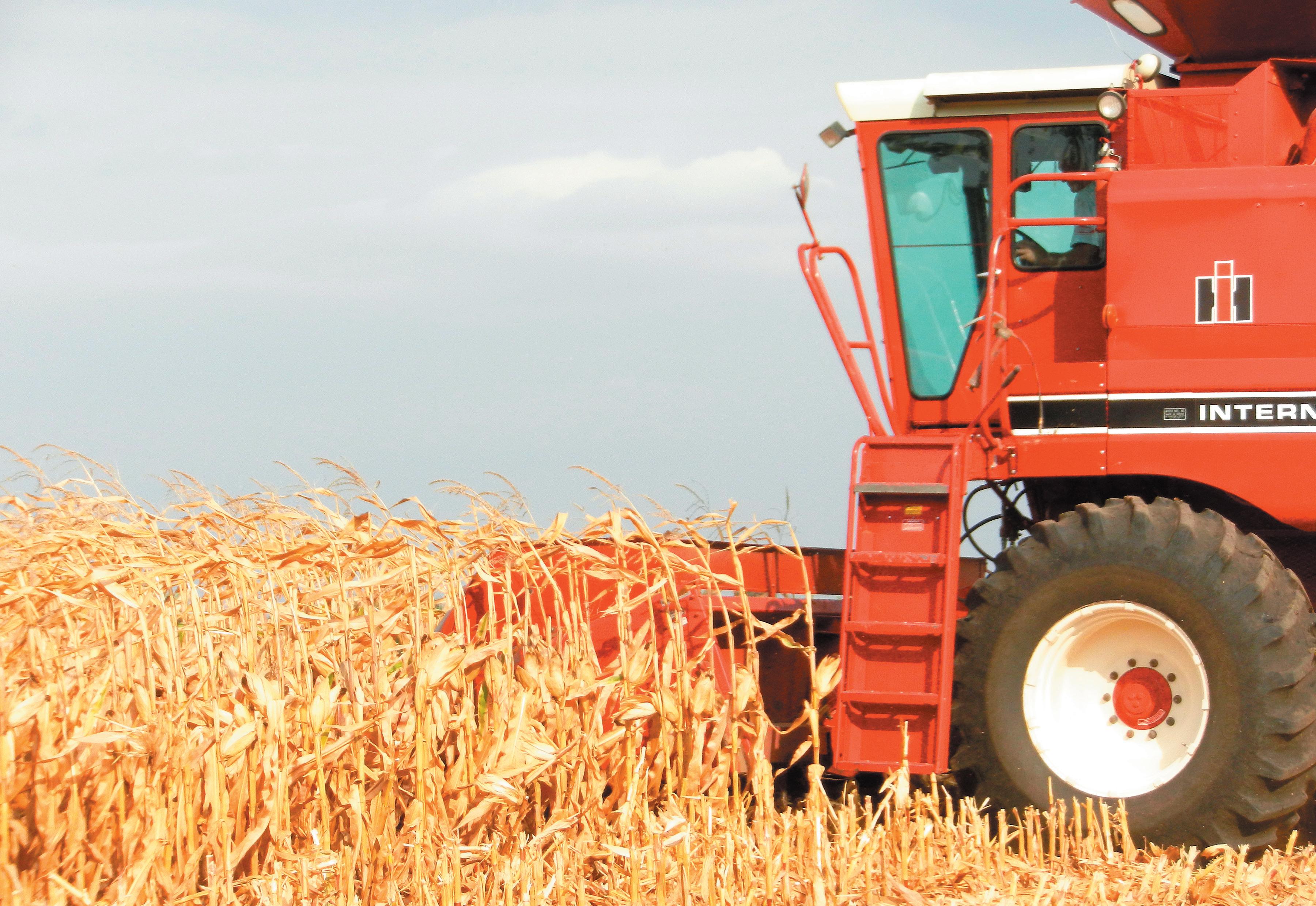
By KRISTIN DANLEY GREINER Farm News writer
The weather has been somewhat cooperative this growing season, although interesting problems have cropped up that have made a small dent in the markets.
“I’ve heard of unique problems like tight tassel wrap,” said Chad Hart with Iowa State University Extension. “We’re seeing a really good-looking crop that will have problems around the edges, but none of those problems are looming large enough to change the overall general storyline.”

The past few years, economists pondered throughout the growing season whether there’d be enough water to push through a sizable crop, Hart said. But this year, growers know they have enough water.
“But with this water does come some disease and pest pressure that could impact yields as we go down the line. There is a likelihood of that happening each day as the crop rolls toward harvest,” Hart said. “The last few years when drier crops had come out of
the field, they were sort of built for storage — you didn’t have a lot of moisture issues. This year, we’ll see — we could be staring at a lot of drying costs because if the crop does come in a little wetter, it becomes harder to store and we’ll need to monitor that. We don’t want to add quality problems onto low prices.”
Record production typically adds challenges to markets. For example, the wheat market in 2025 looks to have a strong production year with strong yields compared to last year. But “we can’t sell it as fast as we can grow it” and prices remain somewhat depressed, Hart said.
See HARVEST, Page 5C
Iowa
Extension, said this year's crop is looking really good, but added record production could create market challenges.
The soybean market also is having a tough time, since exports are struggling, Hart said.
“The corn and wheat markets are one disaster away from a good price, but neither can find it. So pricing overall for 2025 is looking a lot like what we saw in 2024, not a lot of improvement. The challenge is going to be finding ways to boost demand that would spur on price movement,” Hart said. “But given today’s tariff environment, that could be a challenge.”
Even though ethanol is using up a considerable amount of corn, exports will need to grow to match the 2025 harvest and beyond. Feed demand has been in good shape, too, even with a smaller cattle herd and other livestock sectors not really driving demand, Hart said.
“We’ve been selling more corn to the rest of the world than we ever have before, but it’s barely beating out 2020. We’re going to need to keep all our sales and more with the size of the harvest. Soybeans’ biggest challenge is China, which is our No. 1 purchaser and has been for some time, but tariffs are having an influence.”
Producers should be planning what crop they want to move at harvest and thinking about storing the crop to build on better prices, Hart said.
“When looking at futures, we’re sitting just south of $4 corn as of Aug. 4, but next spring, corn is $4.30-4.40,
so we do have some carrying built into the market, so if we want to hang on, we have some better prices looming this spring. Soybeans are south of $10, but next spring they’re up to $10.25-10.50, so for those who have the room and the patience, it looks like we can get some better prices if we can just hang on.”
Dan Keitzer, district 9 director for the Iowa Corn Growers Association, also sits on the U.S. Grains Council. He said the China trade differential “is just devastating to us.”
“As a farmer, they want to send consumer goods here, but buy ag products from South America and that’s very discouraging,” Keitzer said. “We’ve only shipped one cargo of corn to China this marketing year and soybeans aren’t much better — they’ve bought 30 million metric tons this marketing year. It’s disheartening.”
Keitzer said that as farmers look ahead to the new crop coming on board, many still have a bit of old crop left like he does.
“We’re fortunate that we can store our whole crop on the farm, especially since I’m not real happy with prices now, but we have a great crop coming on. We look to the future with storage on our farm but wanting to sell that crop out of the field, but the market hasn’t offered good market prices for fall delivered crops. The crops were planted timely and progressed really well.”
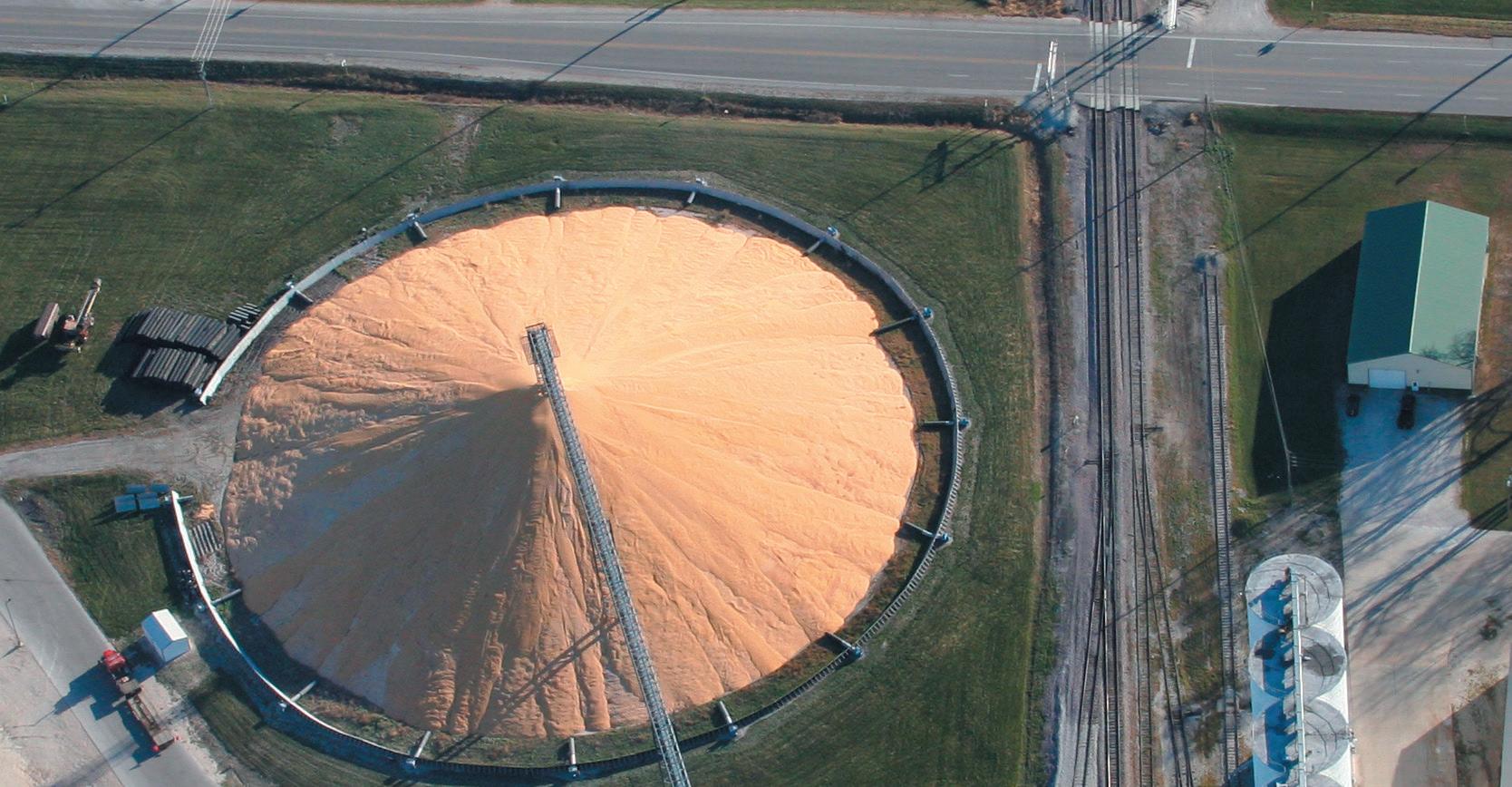

















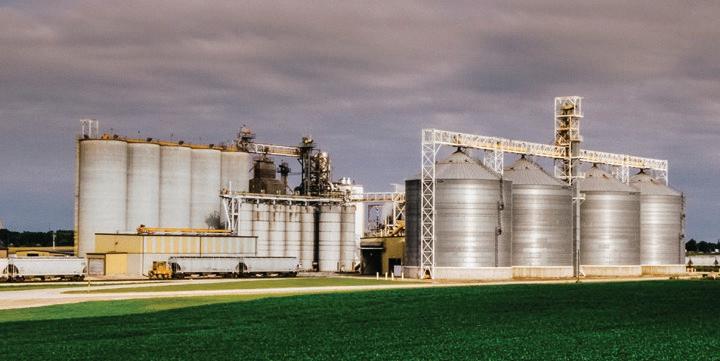





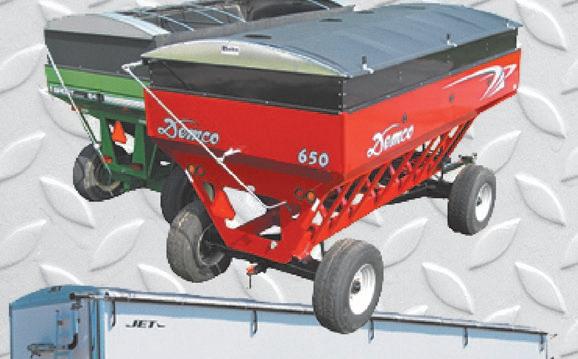




















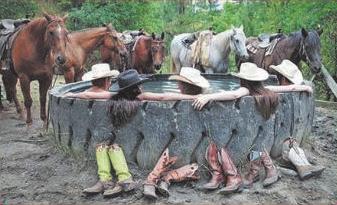










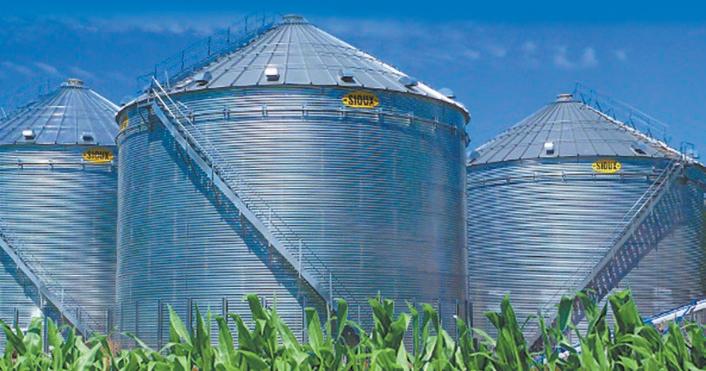















































By LORI BERGLUND Farm News writer
It used to be so much fun. Riding with dad, driving a load to the crib for the first time. Feasting on the hot, homemade dinners that were waiting at noon. (Every true farmer knows that dinner is at noon and supper in the evening.)
It all seemed so easy back then. A good crop, a good price, who could ask for anything more?
Of course, the hypothetical grandma in this story has worked for hours making that dinner, after having made a full breakfast, delivered a snack to the field at 10 and taken another out at 3 before having supper on the table at sunset. In between, she washed the clothes and hung them out to dry in the autumn sun.
It was a busy, stressful time for her, but she loved it just the same.
As for our hypothetical grandpa, he was up before the sun, milking cows and feeding pigs. Thankfully his wife and kids would pick the eggs and let the chickens out for the day. He had a long day ahead of him, and he hoped the crop would be good. There were bills waiting for him in town.
It was a busy, stressful time for him, but he loved it just the same.
Today’s hypothetical farmer is driving a combine that cost more — far more — than what his grandparents paid for the entire farm. And the price of corn, well … it’s about the same, or at least it feels that way some days.
The hypothetical farm wife of today

works in town, she brings home the health insurance for the family. When she’s not at work, she shuttles the farmers from field to field. She brings her husband a sandwich from the gas station and wishes she had time to cook like her grandmother.
A lot of things have changed since way back when, but some things are still the same. It will always be a busy, stressful time of year for the entire farm family.
Dr. David Brown has no magic way of making that stress disappear, but recognizing it and planning ahead on how to manage it can make for a more successful harvest season.
“Recognize that the harvest season is going to be stressful, no matter what you do,” Brown said. “It’s a challenging time because you want to push to get everything done, get that crop in.”
Harvest stress has been a fact of life for every generation. Recognizing that, and developing coping skills to manage the current stressors can make for a better harvest season, according to Brown.
As behavior health specialist for Iowa State University Extension, Brown has decades of experience helping people, especially those who work in agriculture, cope with the stress in their lives and develop plans to manage it so that life is better.
“I manage all of our mental health, suicide prevention, and farm stress programming,” Brown said of his work for Extension. Based on campus, he was previously education director for Hamilton County Extension.













While every occupation has stress, agriculture is unique in that farmers are independent, and yet have little control over so many facets of their farm business.
“What’s unique to farm owners is that there are so many things that are outside of their control,” Brown said. “They can’t control the weather. They can’t control commodity prices, or the price of inputs. Even national and international issues impact commodity prices.”
For a farmer who prides himself on being an independent business owner, to have so many variables that can turn on him at any given time makes for a challenging way to write a business plan.
“It’s just challenging being a farm owner or farm operator when you don’t have control of so many things,” he added.
Starting now, before harvest gets underway, Brown encourages farm families to take control of the factors that they can control.
“Plan ahead, make sure your harvesting team is clear about expectations,” he said. Whether it’s a family member or employee who will be helping with harvest, go over the job and explain it in full. Don’t assume that they know how you want things done.
“Sometimes we have kind of unspoken expectations that can lead to resentment if no one is really sure what they need to be doing,” he said. “Make sure you have a plan and communicate expectations.”
Schedule medical appointments ahead of harvest to make sure any prescriptions are filled and ready to go. Eat well during harvest season. Stock the pantry and freezer so that a variety of meals are ready to go, and avoid day after day of salty lunch meats or empty calories.
“Nutritious meals are really important,”

is over, they could have flown around the world — several times.
If you are sitting too much, get off the combine for regular breaks, Brown encouraged. Take a walk and get the blood pumping. It will help stop blood from pooling in the legs, and will even wake up the brain a bit.
Endless screen time is another concern, especially for the person in the combine. Combined with field dust, eye strain can be a real problem — yet another reason for regular breaks and staying well hydrated.
Expect a little stress; it’s never been any different on the farm. Grandma and Grandpa just had different stress-makers, but they had stress all the same. They got through it, and Brown encouraged today’s farmers to recognize that they will also get through it.
But no member of the family should be afraid to reach out for a little help now and then. Helping neighbors is another tradition on the farm.
“I always say, if the stress has become unmanageable, reach out for help,” Brown said. “Contact the Iowa Concern Hotline at 1-800-447-1985. There are stress counselors and resources available to listen and help.”
Brown said. “Getting good quality fuel helps make sure you can do what you need to do.”
Avoid alcohol as it may interrupt quality sleep.
“After a long day in the field, that cold beer might sound good,” Brown said. “You might think it helps you wind down, but it actually disrupts your sleep cycle and you will not get as good a rest as you should. You may wake up even more fatigued.”
Many farmers over 65 can remember a grandfather who picked corn by hand. It was a completely physical job, but things have changed in that department, as well.
While those in a tractor or semi may climb enough stairs to climb Mount Everest by the time the season is over, the person in the combine can end up with long stretches of seat time. In just one day, many farmers driving a combine will sit longer than they would on a nonstop flight to Hawaii. By the time harvest
There might be rainy days on end. It might be bitterly cold or blistering hot. The commodity prices might fall, or, well, farmers know. But every harvest does finally end.
Looking back years from now, when those typical farmers of today are old and gray, they will say how much they loved it — every last busy minute of it. And their grandkids, farming with their drones and AI, will think, “Boy, Grandma and Grandpa sure had it easy back then.”


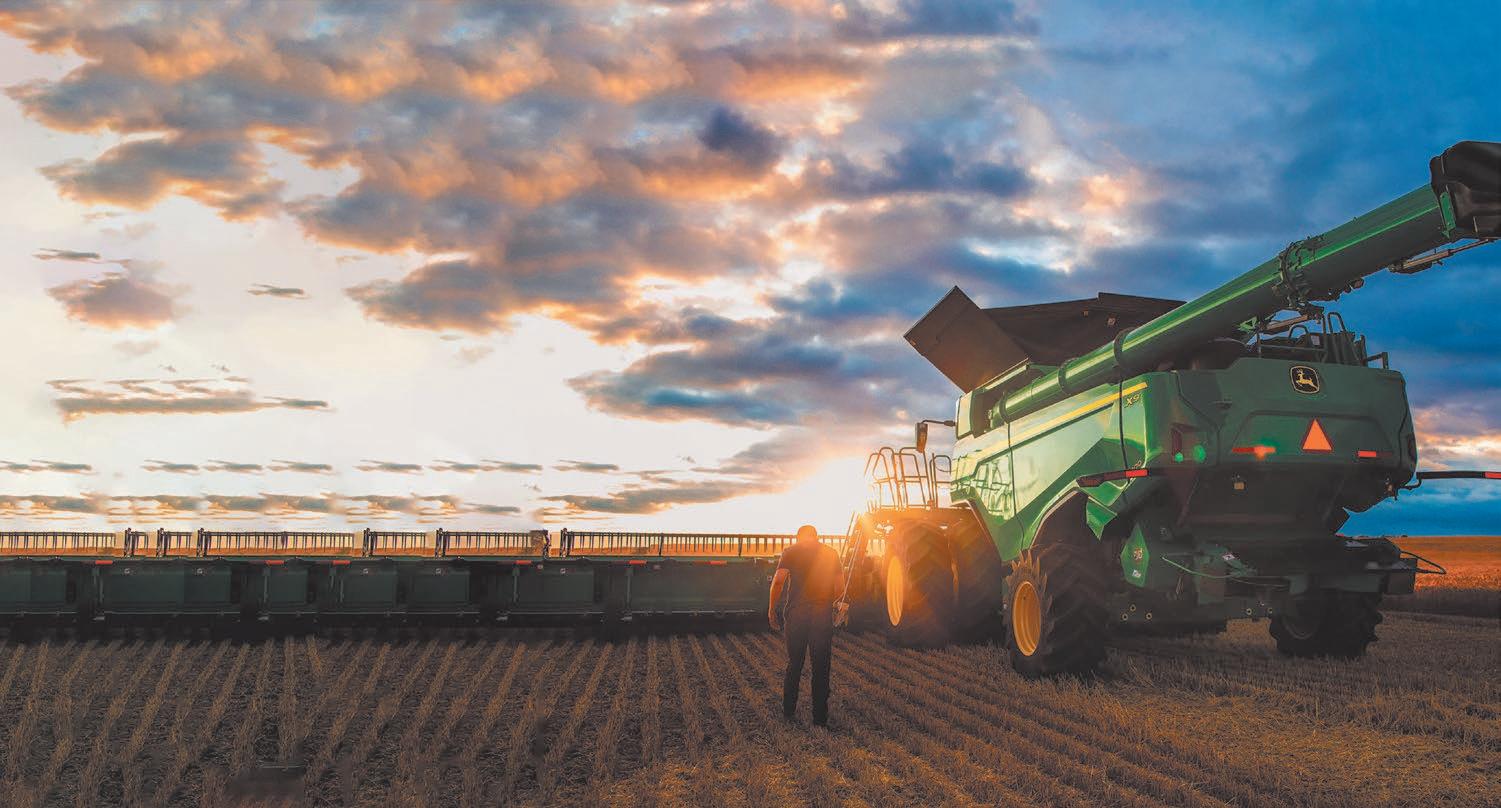




515-332-2545
515-295-3561
641-562-2228
712-362-7747
712-845-2643
515-354-5331
712-469-3392
515-928-2251


If you have a fi replace that burns wood, you know that it loses all of its heat up the chimney. Rick Titus has a wood burning insert that will burn with the effi ciency of a wood stove and fi t inside your fi replace so it keeps your fi replace look, heating up to 1,000-2,000 sq. ft. The insert could heat up to 2,000 sq. ft. and burn a third of the wood!






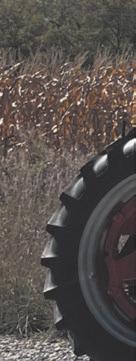


If you have a gas log in your fi replace it also sends all of its heat up the chimney. Rick has Vent-Free gas logs that can burn as effi ciently as a gas cookstove and burn with the damper closed, thus keeping all the heat in the house, heating up to 1,000 sq. ft. of your home
So no matter what kind of fireplace you may have, Rick has an efficient solution for it. Call Rick or email him at yahtitus@gmail. com or go to his website below. Rick even has new fireplaces and wood stoves that can heat your home even during a power outage.






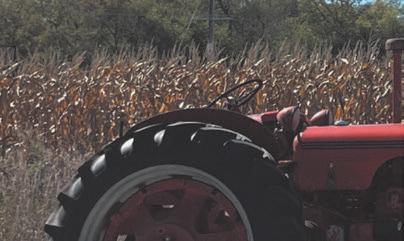



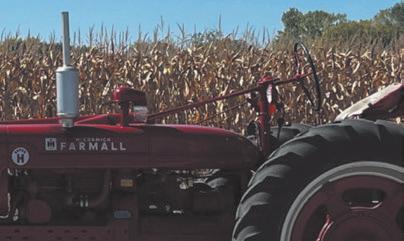


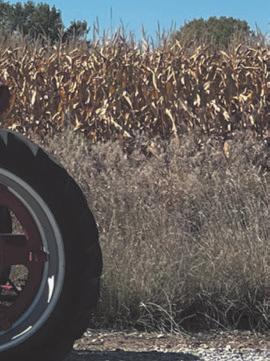


















































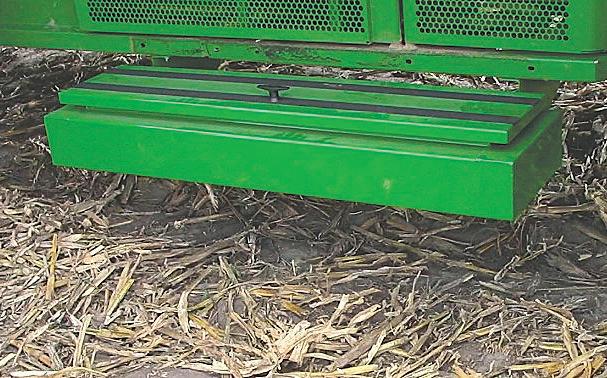

By KRISTIN
DANLEY GREINER Farm News writer
Abundant rainfall this growing season has fueled crop growth and resulted in some localized flooding in August, but so far, pests have not been a big problem for many farmers across the state.
Weeds have been an issue, however, and farmers have had to focus on spraying for them. Tar spot, a fungal disease, also was confirmed in more than two dozen counties. Common and southern rust have been spotted in numerous fields across the state, rising upward from southern states into Iowa. Sudden death syndrome (SDS) and brown stem rot has emerged as a problem in soybean fields, too, this growing season.
The heavy rainfall has flooded fields and roadways alike recently, especially in eastern Iowa. According to the USDA’s crop progress and condition report, 96% of Iowa’s corn has reached the silking stage. Corn in the dough stage was 68 percent, one day ahead of both last year’s pace and the five-year average. Fifteen percent of the corn crop was dented. Corn condition rated 1 percent very poor, 2 percent poor, 11 percent fair, 57 percent good and 29 percent excellent.
Soybeans blooming reached 93 percent. Seventy-five percent of soybeans were setting pods, two days ahead of last year, but were three days behind normal. Soybean conditions rated 1 percent very poor, 2 percent poor, 16 percent fair, 60

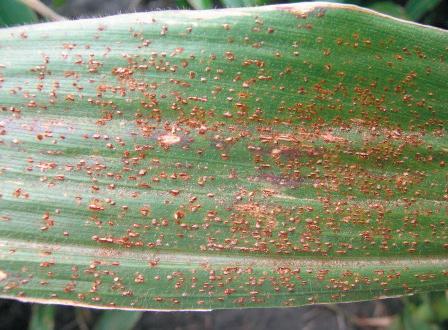
percent good and 21 percent excellent.
Gentry Sorenson, field agronomist with Iowa State Extension based out of Algona, reported “very low levels” of northern corn leaf blight, gray leaf spot and southern rust — but no issues with insects in his area, he said.
“Crop issues this year were mainly related to excess rainfall,” Sorenson said.
Angela Rieck-Hinz, ISU Extension field agronomist based out of Clarion, said that with the exception of rootworm pressure, “There was very little to no insect pests to date this year.”
“There has been minor Japanese beetle feeding on the edges of soybean fields.
“Corn rootworm pressure is present every year. Corn rootworm larvae take their toll every year, but degree of damage is not consistent across years or fields,” Rieck-Hinz said. “If rootworm larvae pressure is significant, they eat roots and consequently nutrient and water uptake is limited, which can cause yield loss. Loss is dependent on severity of root feeding, but farmers can experience a yield loss of 15% for each node of roots eaten or pruned. It is too early to say if there is significant yield loss this year due to rootworm feeding, however.”
Meaghan Anderson, who is based out of Ames as an ISU Extension field agronomist, said that this year’s pests are the same as those that have plagued crops in recent years.
“For the most part, I think the pests were the same ones we deal with in most years, like waterhemp, Japanese beetles and disease issues like tar spot, SDS, and northern corn leaf blight,” Anderson said. “Some pests surprised me a bit this year; soybean gall midge was found in two more counties further east across the state than it's been recorded before (Tama and Poweshiek counties). SDS has shown up earlier and seems to be more obvious than in most years, though this shouldn’t be a surprise with the weather we’ve had. Bacterial leaf streak and southern rust were both surprises in corn this year.”
Many fields were sprayed with fungicide to manage diseases like northern corn leaf blight, gray leaf spot, tar spot and southern rust in corn.
By GENTRY SORENSON
ISU Extension field agronomist
Understanding current levels of corn rootworm is important to understand in each corn field. Corn rootworm adults emerge from mid-July through mid-August. Male corn rootworms emerge before females, and northern corn rootworms emerge after western corn rootworm, usually around five to seven days after.
The two types of corn rootworm beetles that are more often seen in Iowa corn fields are northern rootworms, which are light green to dark green and a quarter inch long. The second is the western corn rootworm, which is yellow with three dark stripes that run lengthwise.
Before adult beetle emergence, corn rootworm larvae feed on corn roots and may cause economic loss. It is important to evaluate corn roots in fields and across the years a field is corn. The evaluation of corn roots helps farmers understand if the current management techniques in each field are effective against this pest. A severe corn rootworm infestation can destroy nodes four through six of the corn plant. These nodes are closest to the soil
surface, and when those nodes are pruned, it interferes with water and nutrient uptake. Plants can also become unstable, which can interfere with harvest because plants are lodged and not standing well in the field.
Inspect your corn roots after you begin to see beetles in your fields. Start by using a spade to dig up corn plants. Use a garden hose with a sprayer to carefully wash the corn roots to remove all dirt. Look at the roots to understand the level of injury that you see on the roots that you are evaluating. The node injury scale available online is a reference that is available to help score damage from corn rootworms on the roots that you are scoring. Videos have also been created to help with understanding the process of digging roots.
Another method to assess root injury includes setting up sticky traps to catch corn rootworm. Sticky traps are used to understand the number of adults that are present in the field. The traps are set up in transects across the field. When 2 beetles or more are captured per day, consider using a different management tactic for corn rootworm control the next time the field is in corn.



